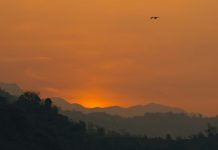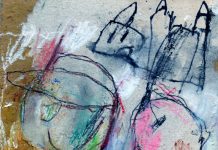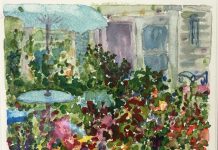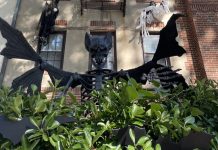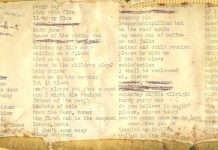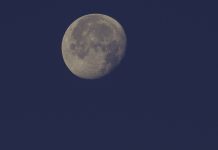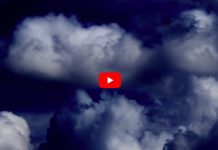The day I learned of my student’s suicide, I walked five
miles, the first three to remember him, the last two to feel
his pain coursing from ankles to knees then escaping the
body like a soul finally settled in the crook of a cottonwood
pressed into this supplicant position by some force of nature
playing hide and seek in the tree’s gnarled body, disfigurement
working its way past these limbs and into the torso, burned
into the flaking skin—devoid of luster yet entirely utilitarian—
like a table leg, perch or an obstacle course for three chipmunks
taken in by the oddity of it all. They skitter, tumble and leap,
testing both the laws of gravity and the veracity of landing spots
just as the young should do in their golden hour. Time flows like
the nearby river—light into dark, burnish into sheen into matte—
the blackened tree and its radiant leaves a sole reminder of the
passing seasons in this wasteland. Now a pocket camera records
the brilliance of silence—ribbons of shadow and sunset—hues
preserved by those who know best the losses sparked by damning
rivers. A withered line carries a shot to a photographer friend who
says I am drawn to difficult lighting situations. I nod and wonder
if this well-meaning critique gets at the heart of the human condition,
serves as an accidental homage to Fleming, Becquerel and both Curies.
Without a trace of bitterness, I get back to documenting the hurt
and hope that collide at the end of days and meditate on the similarities
to our beginnings as star-crossed children dancing on light’s angled blade.


